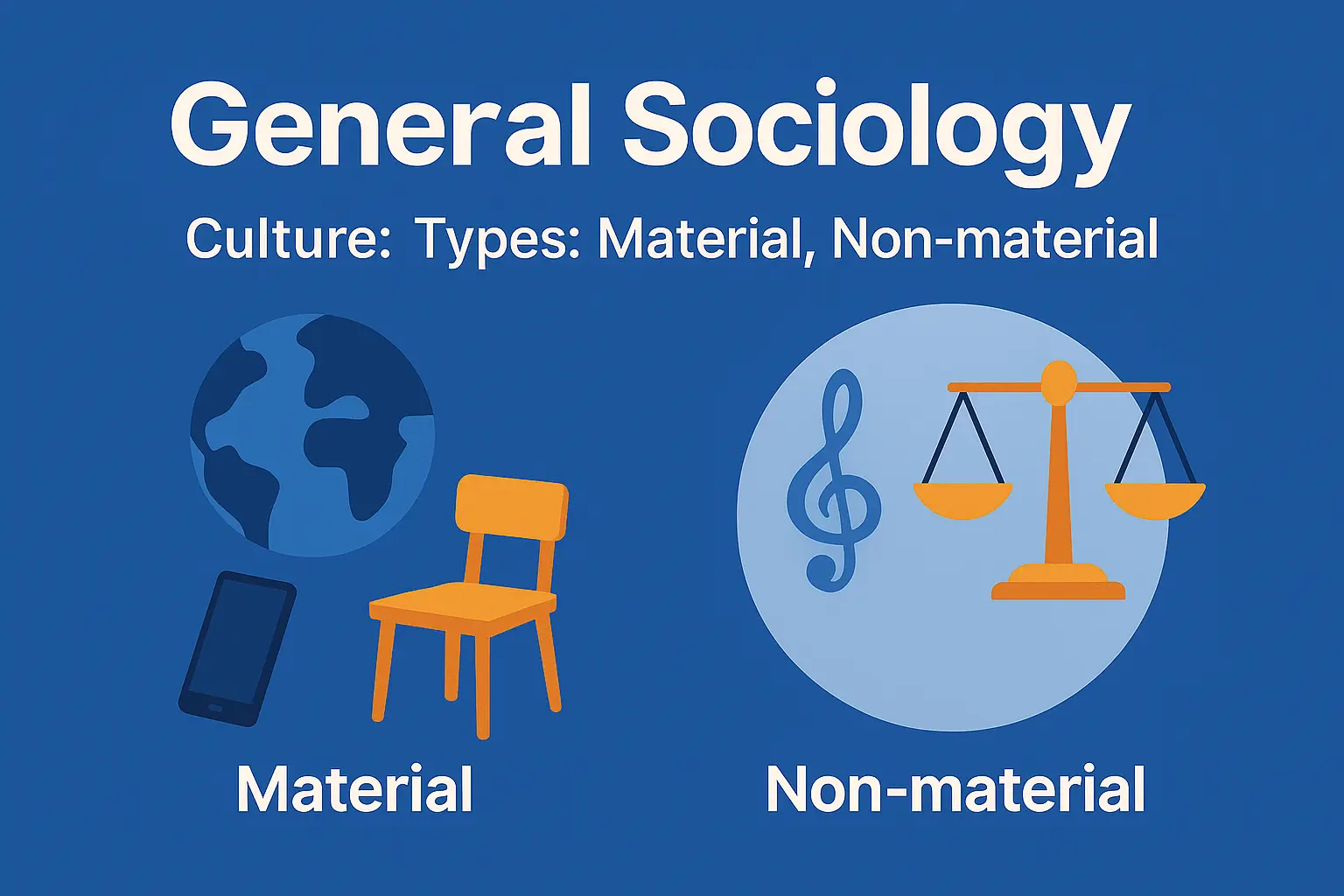Types of Culture: Material and Non-material
(General Sociology – Culture: Types of Culture – Material and Non-material)
Culture determines our way of life, actions, and interactions. It involves more than just traditions or beliefs; it encompasses both the physical and non-physical components of life. In sociology, culture is broadly divided into two main types: Material Culture and Non-material Culture. Grasping these two basics in culture helps illuminate the functions and dynamics of any society.
Culture is considered the soul of any society. It unites individuals within a community through shared meanings, values, and practices. Sociologists focus on both material and non-material facets of culture because both are important to understanding human behavior. Without this distinction, it becomes challenging to understand how cultural factors shape our behavior and the social framework.
Material Culture
Material culture refers to the tangible and physical objects created by human beings. These objects, which constitute material culture, are tangible, observable, and have practical utility in everyday life. Every piece of clothing and every tool we use forms a part of material culture.
Examples:
- Books, pens, furniture
- Buildings, roads, vehicles
- Technology like phones, computers, and machines
- Artifacts, utensils, clothing, and infrastructure
These items are not just tools for survival; they reflect the technological progress and lifestyle of a society. Material culture is external and utilitarian, created for comfort, communication, efficiency, and convenience.
These innovations profoundly impact people’s lives. In contemporary societies, the rapid advancement of material culture brings innovations, shifting the society’s way of life. The internet, smartphones, and digital technology transform daily habits and further exemplify how quickly material culture evolves.
Key Features of Material Culture:
- Man-made and visible
- Easily measurable and accessible
- Invented for practical purposes
- Changes rapidly due to technological advancements
- Reflects the economic and industrial level of society
Non-material Culture
In contrast, non-material culture consists of intangible and abstract elements of culture. These elements shape how people think, their morals, social conduct, and language traditions.
The physical part of non-material culture can be observed when looking at a mobile phone. The way people use it, either dispositionally or disrespectfully, captures non-material ways of culture.
Examples:
- Language and communication style
- Religious beliefs and moral values
- Norms, ethics, customs, and traditions
- Attitudes, laws, rituals, and ideologies
Non-material culture resides in the minds and hearts of people. It is deeply tied to psychological and emotional understanding, shaping how individuals interpret the world around them.
This type of culture is essential for social order. Norms, values, and beliefs shape behavior and social harmony. They offer guidance and foster unity within a community.
Key Features of Non-material Culture:
- Intangible and abstract
- Guides behavior and social expectations
- Changes slowly over time
- Reflects internal beliefs and societal values
- Consists of cognitive (knowledge) and normative (values, rules) elements
Comparison Between Material and Non-material Culture
| Feature | Material Culture | Non-material Culture |
|---|---|---|
| Nature | Physical, tangible | Abstract, intangible |
| Examples | Tools, buildings, machines | Beliefs, customs, values, language |
| Change Rate | Changes rapidly | Changes gradually |
| Existence | External, visible | Internal, psychological |
| Purpose | Practical and utilitarian | Behavioral and normative |
Conclusion
Both material and non-material cultures are essential components of society. One cultivates infrastructure and provides equipment, while the other literally configures mindset, ethics, and actions. Together, they complete the picture of human culture and social organization.
It is beneficial to know this distinction for interpreting contemporary social changes. While the tangible aspects of culture may change quickly, the non-material components, which include identity and morality, remain constant.
In today’s world, however, the interactions between material and non-material cultures often give rise to tensions and conflicts. Understanding the two concepts enables social students and analysts to assess how societies tackle modern challenges while juggling tradition and change.







